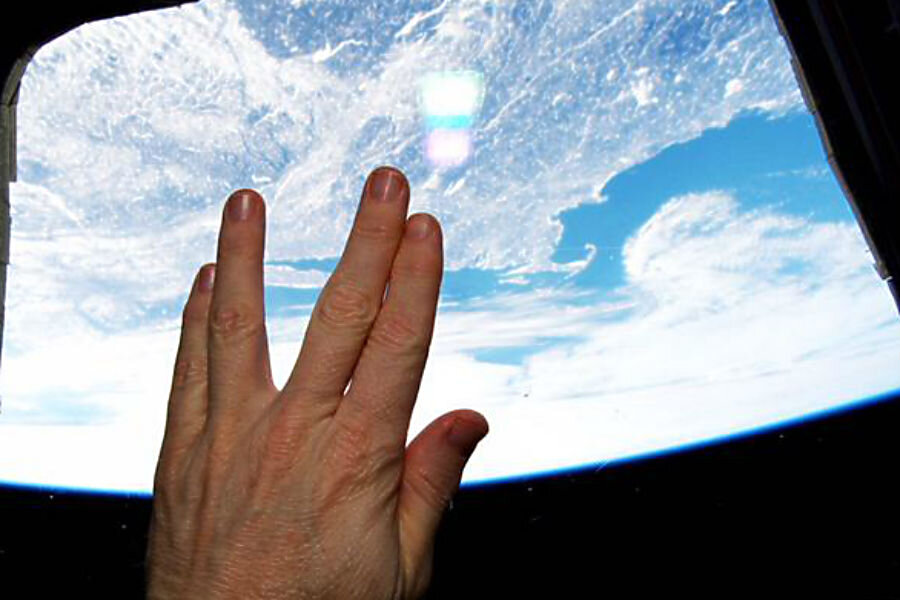A sign from space: Live long and prosper, Leonard Nimoy
Loading...
Astronaut tributes to Mr. Spock – and Leonard Nimoy, the human actor who donned a pair of pointy Vulcan ears – continued Saturday.
As the International Space Station passed over Massachusetts, US astronaut Terry Virts snapped a photo of the Vulcan salute as a tribute to actor Leonard Nimoy on Saturday. Nimoy was born in Boston. Virts tweeted the photo and NASA posted it to its official site.
As Space.com noted, the idea for Spock's signature Vulcan salute was "actually inspired by his Jewish heritage after seeing men at his synagogue use the hand gesture during prayer. He suggested it to the director as a Vulcan greeting and it stuck, Nimoy told the Yiddish Book Center in a video.
On Friday, NASA astronaut Mike Fincke and European Space Agency astronaut Luca Parmitano offered their thoughts, via a video posted to YouTube on Nimoy's role as Spock, who inspired a generation of scientists and engineers all over this planet.
"As we at NASA, with our international partners, explore the moon, Mars, and beyond, we'll take the spirit and energy that Leonard brought to his character, Mr. Spock, along with us," said Fincke. "Live long and prosper."
And ESA Italian astronaut Luca Parmitano said:
The message of Star Trek is one of international cooperation and integration. Mr. Spock, a Vulcan from another planet, was fully integrated into his crew of humans and non-humans. We at the European Space Agency believe in that message – and working with our international partners, we will take that message with us as we go beyond to explore space for humanity and for our planet."
NASA astronaut Scott Kelly, soon to launch on a one-year mission to the International Space Station, offered this tweet:
The official NASA Goddard Space Flight Center, a research facility in Maryland, dug into its photo archives for a 1967 visit by Nimoy.
NASA Administrator Charles Bolden issued the following statement about Nimoy:
“Leonard Nimoy was an inspiration to multiple generations of engineers, scientists, astronauts, and other space explorers. As Mr. Spock, he made science and technology important to the story, while never failing to show, by example, that it is the people around us who matter most. NASA was fortunate to have him as a friend and a colleague. He was much more than the Science Officer for the USS Enterprise. Leonard was a talented actor, director, philanthropist, and a gracious man dedicated to art in many forms. Our thoughts and prayers are with his family, friends, and the legions of Star Trek fans around the world.”








